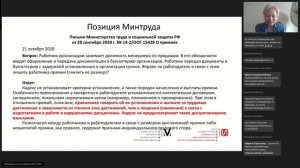
 3:20
3:20
2025-09-11 10:37

 10:11
10:11

 10:11
10:11
2024-06-14 07:18

 27:58
27:58

 27:58
27:58
2025-09-20 10:00

 2:14
2:14

 2:14
2:14
2025-09-19 15:42

 10:29
10:29

 10:29
10:29
2025-09-22 09:39

 23:31
23:31

 23:31
23:31
2025-09-28 11:00

 5:30
5:30

 5:30
5:30
2025-09-24 07:00

 1:13
1:13

 1:13
1:13
2025-09-25 18:03

 34:56
34:56

 34:56
34:56
2025-09-12 16:44

 2:15
2:15

 2:15
2:15
2025-09-25 22:19

 1:57:38
1:57:38

 1:57:38
1:57:38
2025-09-15 15:22

 15:55
15:55

 15:55
15:55
2023-07-11 10:19

 32:16
32:16

 32:16
32:16
2025-09-20 09:34

 5:52
5:52

 5:52
5:52
2025-09-25 23:50

 27:57
27:57

 27:57
27:57
2025-09-16 16:21

 8:30
8:30

 8:30
8:30
2025-09-12 15:00

 4:18
4:18

 4:18
4:18
2025-09-21 11:49

 1:23:24
1:23:24
![Zhamil Turan - Капали (Премьера клипа 2025)]() 3:08
3:08
![INSTASAMKA - BOSS (Премьера клипа 2025)]() 3:41
3:41
![Бонухон & Сардорбек Машарипов - Шанс (Премьера клипа 2025)]() 3:28
3:28
![Зара - Танго о двух влюбленных кораблях (Премьера клипа 2025)]() 3:10
3:10
![A'Studio – Она не виновата (Премьера клипа 2025)]() 2:13
2:13
![Анна Бершадская - Новая я (Премьера клипа 2025)]() 2:41
2:41
![BITTUEV - Не плачь (Премьера клипа 2025)]() 2:18
2:18
![Ислам Итляшев - Не вспоминай (Премьера клипа 2025)]() 2:52
2:52
![Гор Мартиросян - 101 роза (Премьера клипа 2025)]() 4:26
4:26
![Selena Gomez - In The Dark (Official Video 2025)]() 3:04
3:04
![Инна Вальтер - Роза (Премьера клипа 2025)]() 3:18
3:18
![Сергей Одинцов - Девочка любимая (Премьера клипа 2025)]() 3:56
3:56
![Alex Lim, Игорь Крутой - Вокзал (Премьера клипа 2025)]() 3:32
3:32
![Дана Лахова - Одинокая луна (Премьера клипа 2025)]() 2:15
2:15
![Руслан Шанов - Особенная (Премьера клипа 2025)]() 2:16
2:16
![Жасурбек Мирзажонов - Суймаганга суйкалдим (Премьера клипа 2025)]() 5:45
5:45
![Tural Everest, Baarni - Ушедший покой (Премьера клипа 2025)]() 3:01
3:01
![Шерзодбек Жонибеков - Дадажон (Премьера клипа 2025)]() 3:02
3:02
![Алмас Багратиони - Сила веры (Премьера клипа 2025)]() 3:18
3:18
![Рейсан Магомедкеримов, Ренат Омаров - Бла-та-та (Премьера клипа 2025)]() 2:26
2:26
![Баллада о маленьком игроке | Ballad of a Small Player (2025)]() 1:42:60
1:42:60
![Сверху вниз | Highest 2 Lowest (2025)]() 2:13:21
2:13:21
![Псы войны | Hounds of War (2024)]() 1:34:38
1:34:38
![Хищник | Predator (1987) (Гоблин)]() 1:46:40
1:46:40
![Храброе сердце | Braveheart (1995)]() 2:57:46
2:57:46
![Фантастическая четвёрка: Первые шаги | The Fantastic Four: First Steps (2025)]() 1:54:40
1:54:40
![Кей-поп-охотницы на демонов | KPop Demon Hunters (2025)]() 1:39:41
1:39:41
![Плохие парни 2 | The Bad Guys 2 (2025)]() 1:43:51
1:43:51
![Плохой Cанта 2 | Bad Santa 2 (2016) (Гоблин)]() 1:28:32
1:28:32
![Непрощённая | The Unforgivable (2021)]() 1:54:10
1:54:10
![Диспетчер | Relay (2025)]() 1:51:56
1:51:56
![Супруги Роуз | The Roses (2025)]() 1:45:29
1:45:29
![Элис, дорогая | Alice, Darling (2022)]() 1:29:30
1:29:30
![Лучшее Рождество! | Nativity! (2009)]() 1:46:00
1:46:00
![Мужчина у меня в подвале | The Man in My Basement (2025)]() 1:54:48
1:54:48
![Сколько стоит жизнь? | What Is Life Worth (2020)]() 1:58:51
1:58:51
![Обитель | The Home (2025)]() 1:34:43
1:34:43
![Французский любовник | French Lover (2025)]() 2:02:20
2:02:20
![Чумовая пятница 2 | Freakier Friday (2025)]() 1:50:38
1:50:38
![Мальчишник в Таиланде | Changeland (2019)]() 1:25:47
1:25:47
![Артур и дети круглого стола]() 11:22
11:22
![Сборники «Умка»]() 1:20:52
1:20:52
![Сборники «Оранжевая корова»]() 1:05:15
1:05:15
![Енотки]() 7:04
7:04
![Простоквашино]() 6:48
6:48
![Пиратская школа]() 11:06
11:06
![Сборники «Простоквашино»]() 1:04:60
1:04:60
![Корги по имени Моко. Новый питомец]() 3:28
3:28
![Кадеты Баданаму Сезон 1]() 11:50
11:50
![МиниФорс Сезон 1]() 13:12
13:12
![Мартышкины]() 7:09
7:09
![Врумиз. 1 сезон]() 13:10
13:10
![Истории Баданаму Сезон 1]() 10:02
10:02
![Тайны Медовой долины]() 7:01
7:01
![Команда Дино Сезон 1]() 12:08
12:08
![Мультфильмы военных лет | Специальный проект к 80-летию Победы]() 7:20
7:20
![Новогодние мультики – Союзмультфильм]() 7:04
7:04
![Космический рейнджер Роджер Сезон 1]() 11:32
11:32
![Тёплая анимация | Новая авторская анимация Союзмультфильма]() 10:21
10:21
![Сборники «Приключения Пети и Волка»]() 1:50:38
1:50:38

 1:23:24
1:23:24Скачать видео
| 256x124 | ||
| 640x308 | ||
| 1280x616 |
 3:08
3:08
2025-10-22 14:26
 3:41
3:41
2025-10-23 13:04
 3:28
3:28
2025-10-24 11:20
 3:10
3:10
2025-10-27 10:52
 2:13
2:13
2025-10-31 12:53
 2:41
2:41
2025-10-22 14:02
 2:18
2:18
2025-10-31 15:53
 2:52
2:52
2025-10-28 10:47
 4:26
4:26
2025-10-25 12:55
 3:04
3:04
2025-10-24 11:30
 3:18
3:18
2025-10-28 10:36
 3:56
3:56
2025-10-28 11:02
 3:32
3:32
2025-10-31 15:50
 2:15
2:15
2025-10-22 14:16
 2:16
2:16
2025-10-31 12:47
 5:45
5:45
2025-10-27 13:06
 3:01
3:01
2025-10-31 13:49
 3:02
3:02
2025-10-25 13:03
 3:18
3:18
2025-10-24 12:09
 2:26
2:26
2025-10-22 14:10
0/0
 1:42:60
1:42:60
2025-10-31 10:53
 2:13:21
2:13:21
2025-09-09 12:49
 1:34:38
1:34:38
2025-08-28 15:32
 1:46:40
1:46:40
2025-10-07 09:27
 2:57:46
2:57:46
2025-08-31 01:03
 1:54:40
1:54:40
2025-09-24 11:35
 1:39:41
1:39:41
2025-10-29 16:30
 1:43:51
1:43:51
2025-08-26 16:18
 1:28:32
1:28:32
2025-10-07 09:27
 1:54:10
1:54:10
2025-08-27 17:17
 1:51:56
1:51:56
2025-09-24 11:35
 1:45:29
1:45:29
2025-10-23 18:26
 1:29:30
1:29:30
2025-09-11 08:20
 1:46:00
1:46:00
2025-08-27 17:17
 1:54:48
1:54:48
2025-10-01 15:17
 1:58:51
1:58:51
2025-08-27 17:17
 1:34:43
1:34:43
2025-09-09 12:49
 2:02:20
2:02:20
2025-10-01 12:06
 1:50:38
1:50:38
2025-10-16 16:08
 1:25:47
1:25:47
2025-08-27 17:17
0/0
 11:22
11:22
2023-05-11 14:51
 1:20:52
1:20:52
2025-09-19 17:54
 1:05:15
1:05:15
2025-09-30 13:45
 7:04
7:04
2022-03-29 18:22
 6:48
6:48
2025-10-17 10:00
 11:06
11:06
2022-04-01 15:56
 1:04:60
1:04:60
2025-09-02 13:47
 3:28
3:28
2025-01-09 17:01
2021-09-22 21:17
2021-09-23 00:15
 7:09
7:09
2025-04-01 16:06
2021-09-24 16:00
2021-09-22 21:29
 7:01
7:01
2022-03-30 17:25
2021-09-22 22:29
 7:20
7:20
2025-05-03 12:34
 7:04
7:04
2023-07-25 00:09
2021-09-22 21:49
 10:21
10:21
2025-09-11 10:05
 1:50:38
1:50:38
2025-10-29 16:37
0/0

